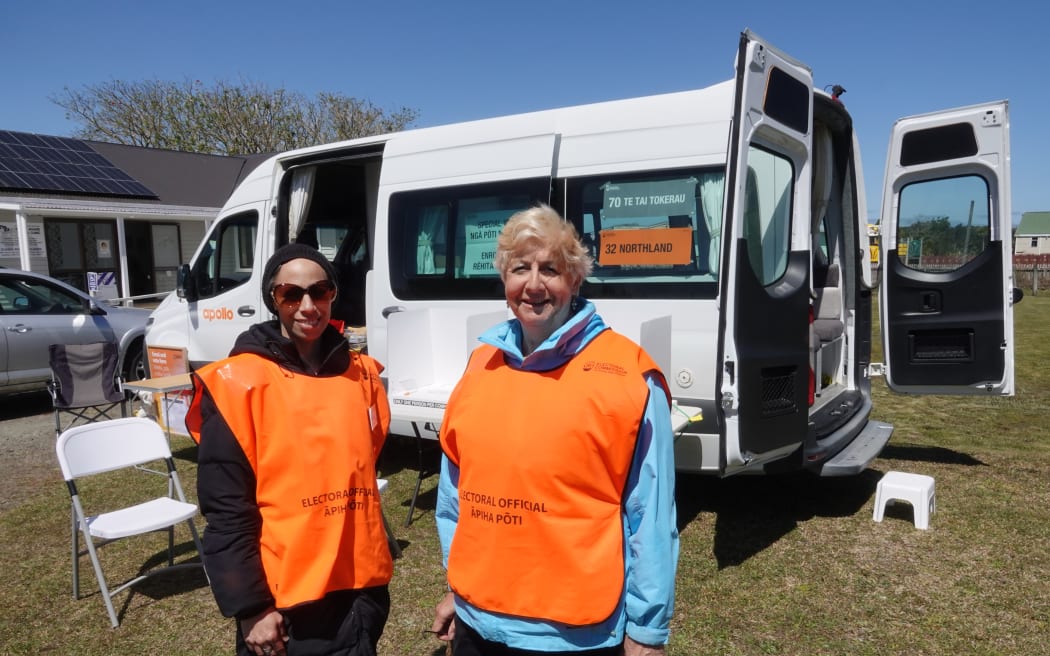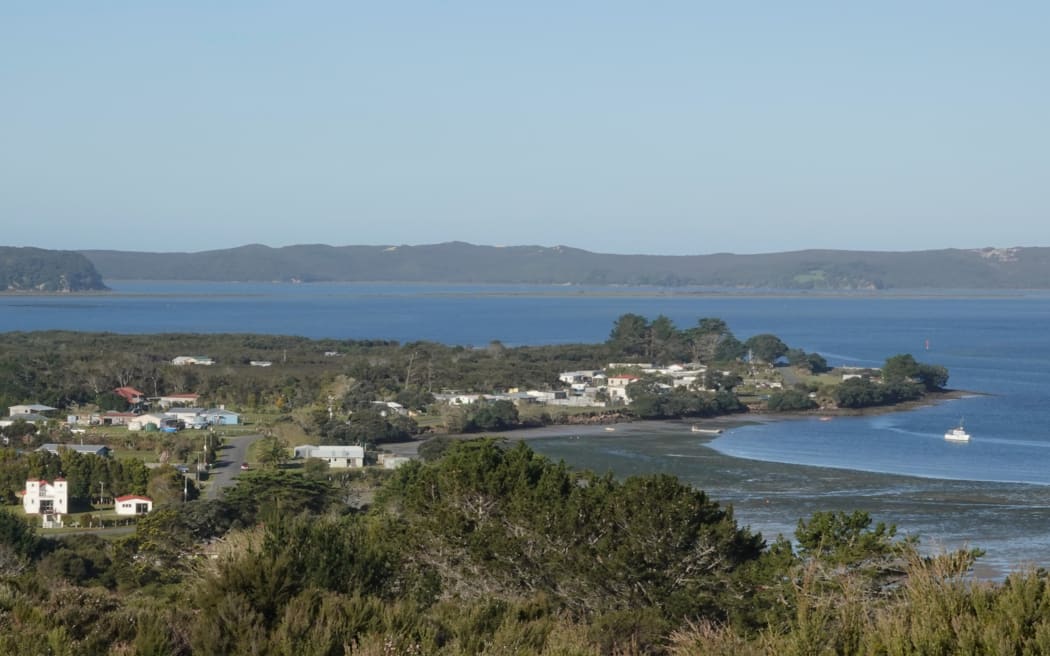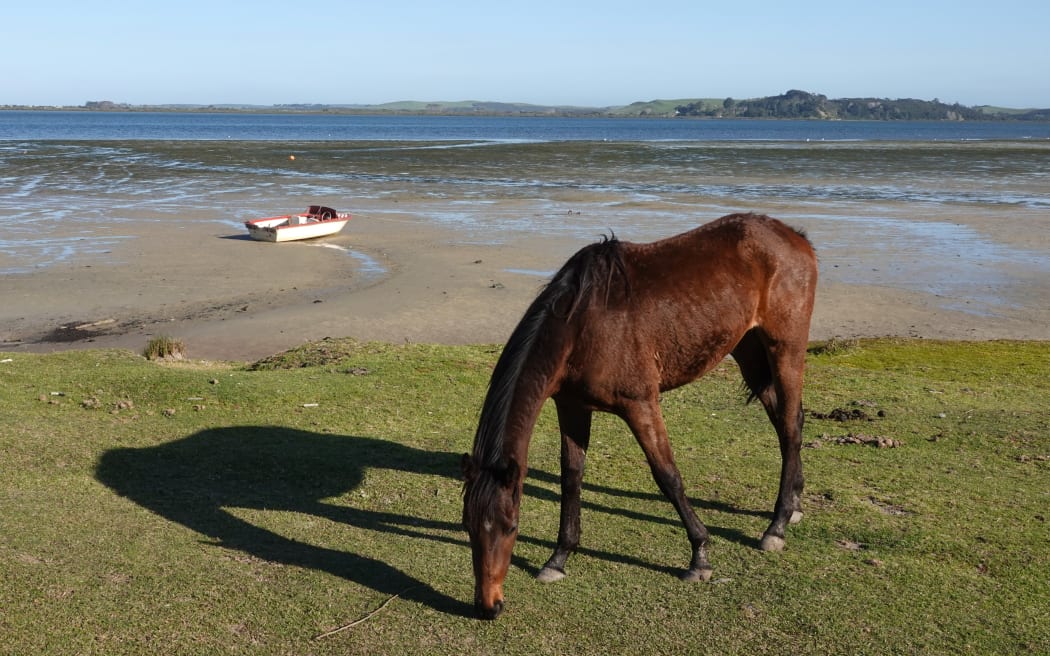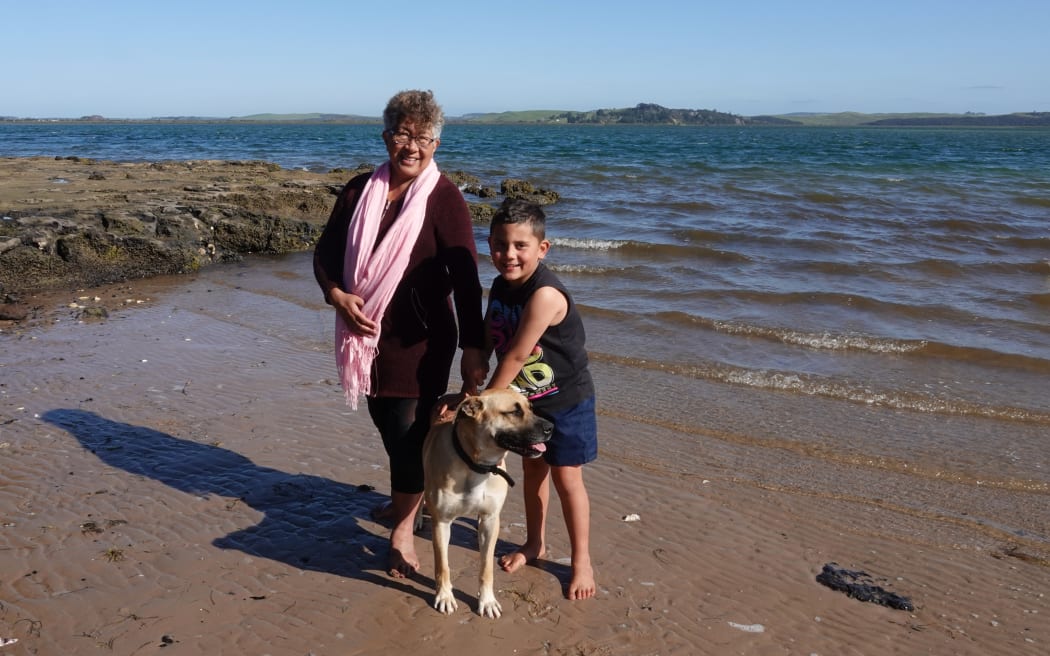
Election officials Sylvia Popata of Kaitāia, left, and Sue Thomas of Waimate North at New Zealand’s northernmost voting station.
Photo: RNZ/ Peter de Graaf
Few New Zealanders live further from the nation’s centre of political power than the residents of Te Hāpua.
The country’s northernmost settlement, Te Hāpua nestles beside the stunning Parengarenga Harbour, down a rough gravel road just south of Cape Rēinga.
This mostly Māori settlement boasts a population of at most 200 people, a church, a marae, a health clinic, the country’s northernmost school, good fishing, and a wharf famous for summer bomb competitions.
On election day, Te Hāpua will also host New Zealand’s northernmost voting station.
Given their isolation and distance from the Beehive, you could be forgiven for assuming locals have little interest in politics or the upcoming election.
It turns out, however, that is not the case.
Dorothy Readon was the first person to make use of a mobile early voting station when it parked up outside the settlement’s health clinic last week.
She also talked her brother and son into voting.
“I was the first one to vote here in Te Hāpua. I’ve voted since I was 18 years old, and I believe if you don’t vote you don’t have a right to say anything about what happens after that.”

Te Hāpua, New Zealand’s northernmost settlement, nestles beside the Parengarenga Harbour.
Photo: RNZ/ Peter de Graaf
While some politicians in Wellington focus on transgender toilets or interest deductibility, in Te Hāpua the big issues were far more fundamental.
In fact, one resident, who did not want to give his name, said the number-one problem facing Te Hāpua is something most New Zealanders take for granted.
“It’s water. We’ve never had any water all these years. We depend on the sky. That’s number one. The other thing is sewage. We’ve never had a sewage system. We have a lot of long drops here.”
Roading was another big issue.
He said locals relied on the road linking Te Hāpua with State Highway 1 in emergencies and to get to their nearest supermarket, 90 minutes away in Kaitāia, but it was unsealed, rough and badly corrugated.
Many residents told RNZ memories of the last severe drought to hit the Far North, in 2019-20, were still fresh, and water worries had been revived by the prospect of a dry summer.
Others named a shortage of housing and jobs as top concerns for Te Hāpua.

Horses wander freely along the shore.
Photo: RNZ / Peter de Graaf
Further along the shore, where horses, cows and dogs roamed freely, Lydia added drug use to that list.
“Unemployment, I think isolation is a big issue – not that politics can solve that – and probably P, the use of P.”
While it was not clear how prevalent the drug was in the area, it was present, she said.
If there was one concern Te Hāpua shared with the rest of New Zealand, it was the soaring cost of living.
Dorothy said she was fortunate to live off-grid so at least she she did not have to pay some of New Zealand’s highest power prices.
“I’d like politicians to address the fact that people all over New Zealand are suffering. It’s really hard with the price increases in food, and gas, and housing. How are we supposed to deal with that?”
Even her son, who had a high-paying job in Tauranga, struggled to pay his rent, she said.

Te Hāpua Marae Komiti member Lydia with her mokopuna Tyler.
Photo: RNZ/ Peter de Graaf
While life in New Zealand’s northernmost settlement was not necessarily easy, Lydia said she loved it anyway – especially the strong sense of community.
“I love the weather, the people… I love how passionate the people are. I found that out by joining the marae committee. They want so much to advance the people. It’s about working communally, not as an individual.”
Dorothy agreed, saying people in Te Hāpua looked out for each other.
“We’re lucky we have a community that helps each other out. My hubbie goes out and gets fish, and everybody gets fish. Somebody might get extra meat, and everybody gets meat.”
Everyone in Te Hāpua spoken to by RNZ agreed it was important to vote but some residents went a step further, saying their part of the country had an important part to play in keeping the government on track.
In the Māori world view, the top of the Far North, Te Hiku o Te Ika, was the tail of the fish, while Wellington was the head.
The head believed it was in charge, but it was the tail that drove the fish forward through the water.
Ngāti Kuri kaumātua Pene Waitai explained using a local whakataukī, or proverb.
“It goes like this: Kia pātōtō ra anō te hiku, ki te upoko o te ika, ka tika te haere. To give you a translation: Only when the tail taps the head of the fish, will it find its right direction.”
The saying was often used in reference to Te Hāpua-born Matiu Rata, a highly regarded Cabinet minister who helped establish the Waitangi Tribunal.
It was seen as his job to tap the head of the fish and keep the government heading in the right direction.
Pene Waitai said it was vital to have a say in the election.
“It’s the only chance we’ve got, and we’ve got to make the most of that. We can’t leave the government to make the decisions.”
Te Hāpua’s pop-up early voting station will return to Whakawhiti Ora Pai health clinic from 10am-4pm on Thursday, 12 October.
Locals who prefer to vote on election day can head to Te Kura o Te Hāpua, New Zealand’s northernmost school, from 9am-7pm on Saturday.
Te Hāpua’s other claim to fame was that it was the starting point in September 1975 of Dame Whina Cooper’s famous Land March – another case of the tail of the fish sending a message to Wellington.




